In the vast, unexplored depths of our oceans, there are creatures that seem to defy the very boundaries of imagination. These undersea inhabitants can rival any horror movie monster with their eerie appearances and mysterious behaviors. While the ocean’s beauty is undeniable, the following 12 sea creatures remind us that nature often has a dark and enigmatic side.
1. Anglerfish
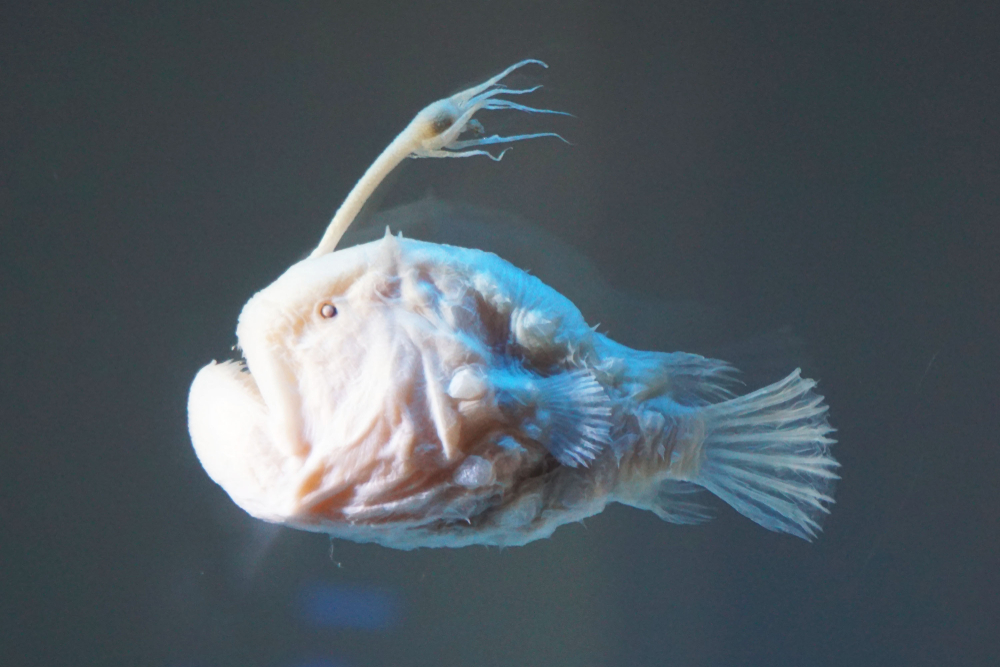
For anyone who’s seen Pixar’s “Finding Nemo,” the anglerfish is unforgettable. Found at the murky depths of the Atlantic and Antarctic Oceans, these nightmarish creatures have a bioluminescent lure hanging from their heads, used to attract unsuspecting prey. The female anglerfish can grow up to 3.3 feet in length, while the males are significantly smaller and often fuse to the female for reproduction, according to National Geographic. Their massive mouths and sharp teeth make them the stuff of oceanic horror tales.
The hunting strategy of the anglerfish is as eerie as its appearance. It lures its prey close before snapping its massive jaws shut in a blink. This ambush technique is highly effective in the pitch-black environments they inhabit. Despite their ghastly appearance, anglerfish play a crucial role in the deep-sea ecosystem, and scientists continue to study them to better understand the mysteries of the ocean depths.
2. Goblin Shark
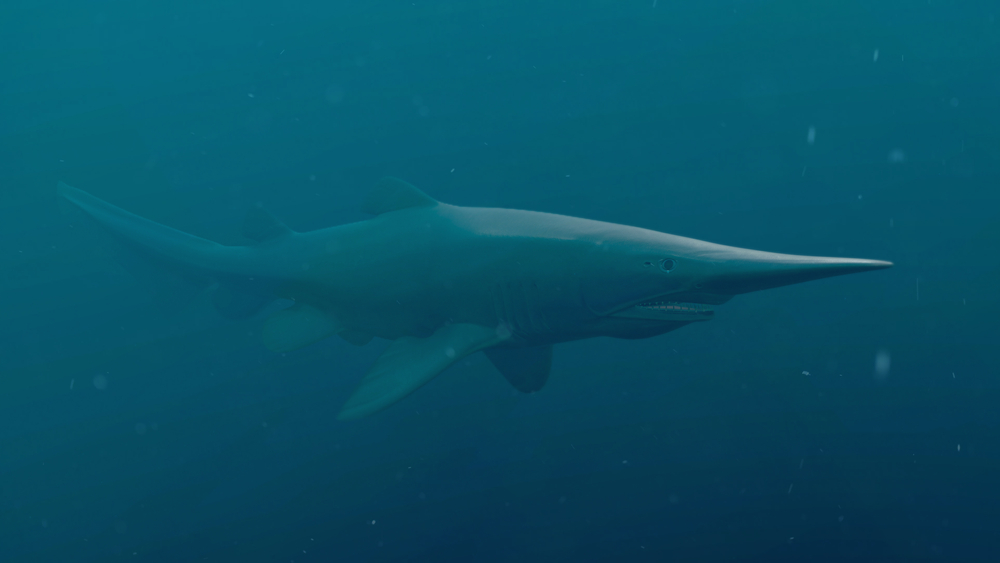
The goblin shark is a living fossil, a relic from a time long before humans walked the earth. With its elongated snout and protruding jaws, it’s no wonder this shark has been dubbed the “alien of the deep.” Found in waters around Japan, these sharks can grow up to 12 feet in length and have a distinct pinkish hue due to their blood vessels being visible through their semi-transparent skin. Their appearance is both fascinating and terrifying, capturing the curiosity of marine biologists and horror aficionados alike.
The goblin shark’s hunting technique is as peculiar as its appearance. It can extend its jaws forward to snatch up prey, a unique adaptation that enables it to feed efficiently in the deep sea’s dark, high-pressure environment. These sharks are rarely seen, making them an intriguing subject of study. Their elusive nature and grotesque features make them a testament to the ocean’s endless capacity for wonder and terror.
3. Vampire Squid
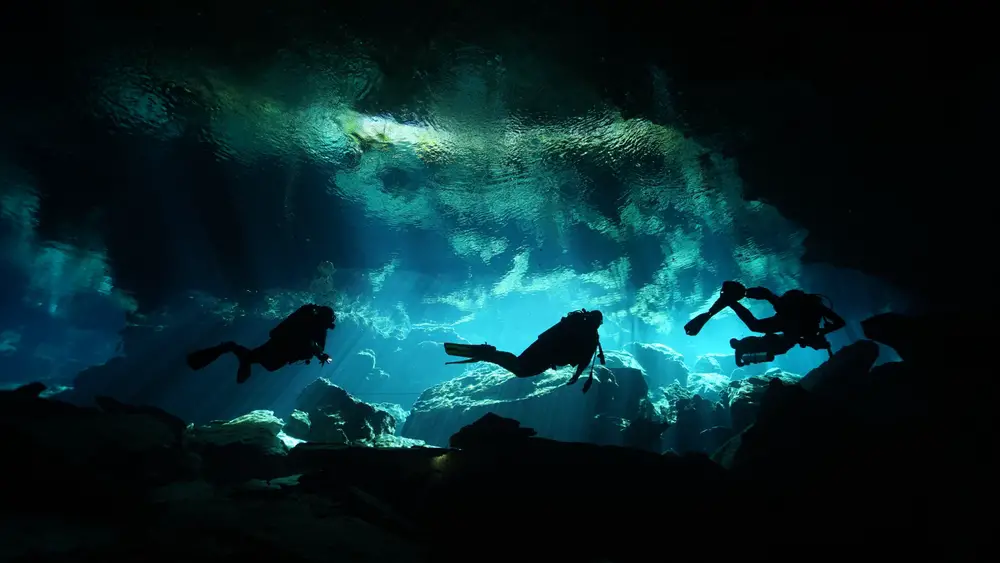
Inhabiting the lightless depths of the world’s oceans, the vampire squid is a true marvel of adaptation. Despite its menacing name, this creature is more of a scavenger than a predator. With a cloak-like webbing that connects its arms, it can appear both mesmerizing and frightening. According to Ocean Conservancy, the vampire squid’s unique physiology allows it to survive in the oxygen-minimum zones of the ocean, where few others can.
The vampire squid’s survival strategy involves using bioluminescent displays to confuse predators. By emitting a cloud of glowing particles, it can create an effective smokescreen, providing an escape route in the dark abyss. This creature is a testament to the ingenuity of nature, thriving in environments that are inhospitable to most forms of life. Despite its ominous moniker, the vampire squid demonstrates that appearances can be deceiving in the deep sea’s enigmatic world.
4. Deep-Sea Dragonfish
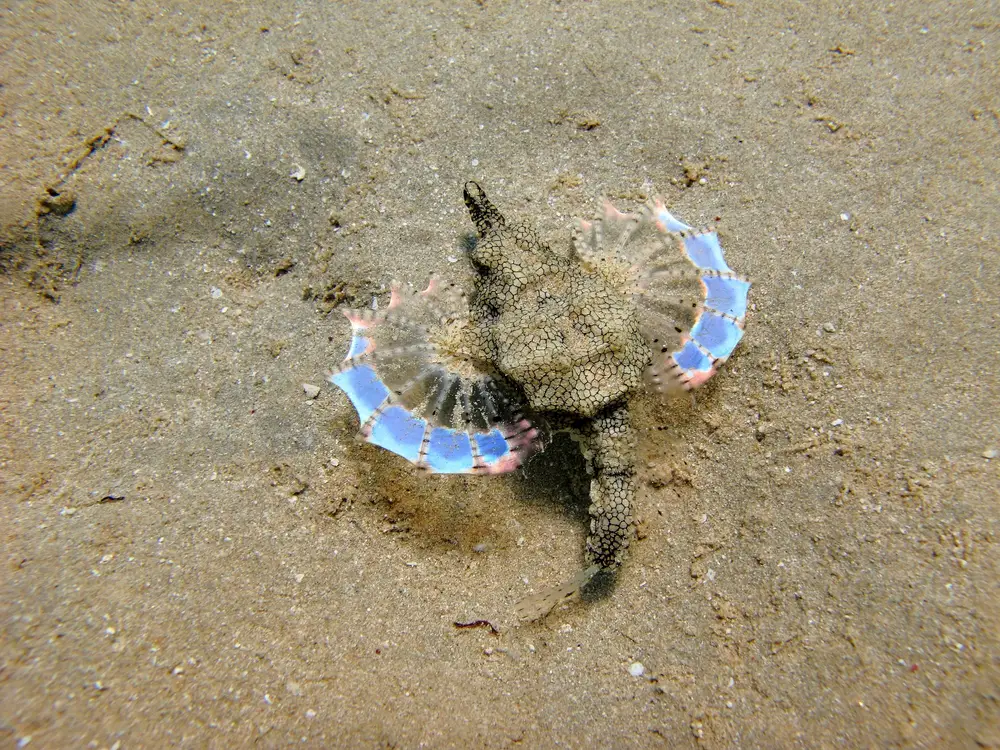
The deep-sea dragonfish is a creature that embodies the beauty and terror of the ocean’s abyss. With its oversized mouth filled with razor-sharp teeth and an eerie bioluminescent barbel, it looks like something straight out of a gothic novel. These fish reside at depths of up to 5,000 feet, where sunlight is nothing but a distant memory. Their ability to produce light not only aids in hunting but also in communication with potential mates.
Despite its fearsome appearance, the dragonfish is a relatively small creature, measuring only about 6 inches in length. Its life in near-total darkness necessitates a highly specialized physiology, allowing it to thrive where few others dare to venture. The dragonfish’s delicate balance of predatory prowess and survival instinct makes it a captivating subject for researchers. Its luminous adaptation is a brilliant example of life flourishing against the odds in the ocean’s depths.
5. Giant Isopod

Resembling an oversized pill bug, the giant isopod is a scavenger of the deep-sea floor. Found in the cold, dark waters of the Atlantic, Pacific, and Indian Oceans, as outlined by the Monterey Bay Aquarium, these crustaceans can grow up to 14 inches in length. Their armored exterior and multiple legs give them an otherworldly appearance, making them a staple in any list of oceanic oddities. They feed primarily on the remains of dead marine creatures, contributing significantly to the ocean’s ecological recycling process.
Giant isopods are known for their slow metabolism, allowing them to survive for long periods without food. This adaptation is crucial in the deep-sea environment, where meals are few and far between. Their ability to endure such harsh conditions speaks to the resilience of life in one of Earth’s most inhospitable habitats. Although they may look intimidating, giant isopods are a reminder of the incredible diversity and adaptability of organisms in the deep ocean.
6. Frilled Shark
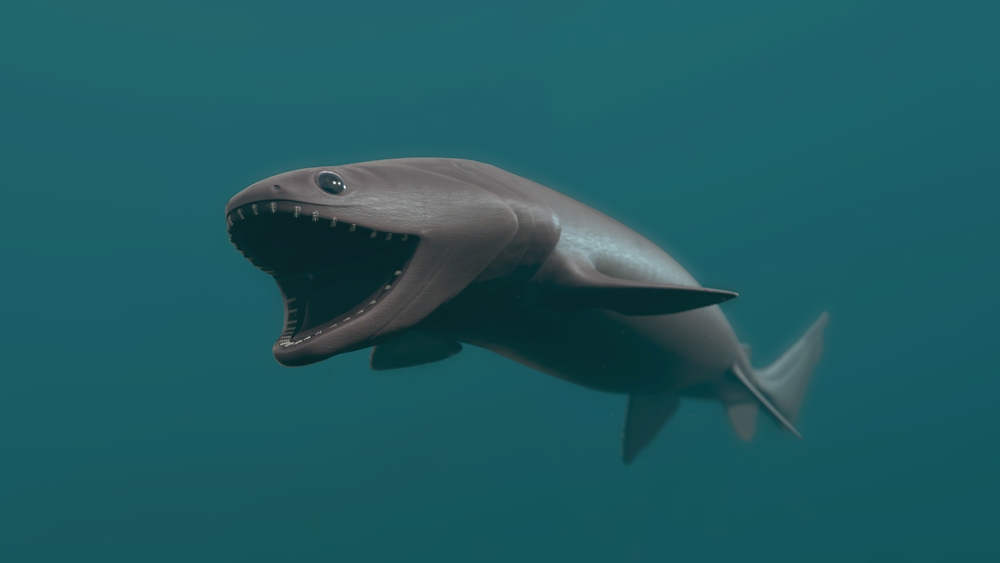
With its elongated, eel-like body and rows of needle-like teeth, the frilled shark is often referred to as a “living fossil.” Found in deep waters off the coasts of Japan and Australia, these sharks are rarely seen by humans. Their prehistoric appearance and slow movement give them an almost mythical status among marine creatures. The frilled shark’s unique anatomy allows it to swallow prey whole, aided by a flexible jaw and backward-facing teeth.
The frilled shark’s serpentine body and eerie demeanor have fascinated marine biologists for decades. It is thought to capture prey through an approach similar to that of a snake, lunging to engulf its meal in one swift motion. Despite its fearsome capabilities, the frilled shark poses little threat to humans, as it dwells far from areas frequented by people. Its rarity and unique features continue to make it a subject of scientific intrigue and study.
7. Blobfish
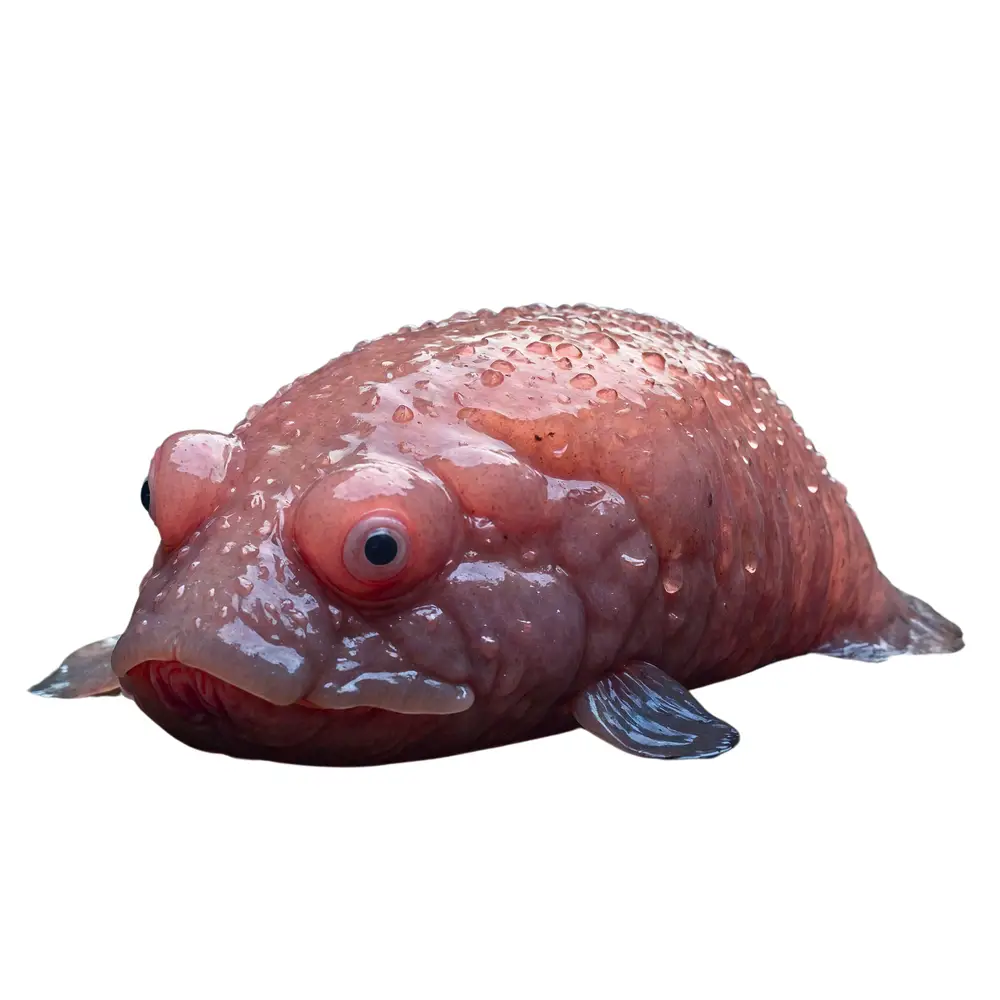
The blobfish has earned the unfortunate title of the “world’s ugliest animal,” yet it is a masterpiece of deep-sea adaptation. Living off the coasts of Australia and Tasmania, it inhabits depths where high pressure would crush most conventional fish. Its gelatinous body, devoid of muscle, allows it to remain buoyant with minimal effort, a necessary trait for survival in its habitat. The blobfish’s unusual appearance is a result of its adaptation to extreme pressure conditions, where its shape is more streamlined.
Despite its unappealing looks, the blobfish is an example of evolutionary success in one of Earth’s most challenging environments. It feeds on edible matter that drifts by, conserving energy in the sparse deep-sea ecosystem. The blobfish’s very existence challenges our perceptions of beauty and functionality in the natural world. Its peculiar appearance may inspire laughter or unease, but it underscores the diverse adaptations necessary for life in the ocean’s depths.
8. Gulper Eel
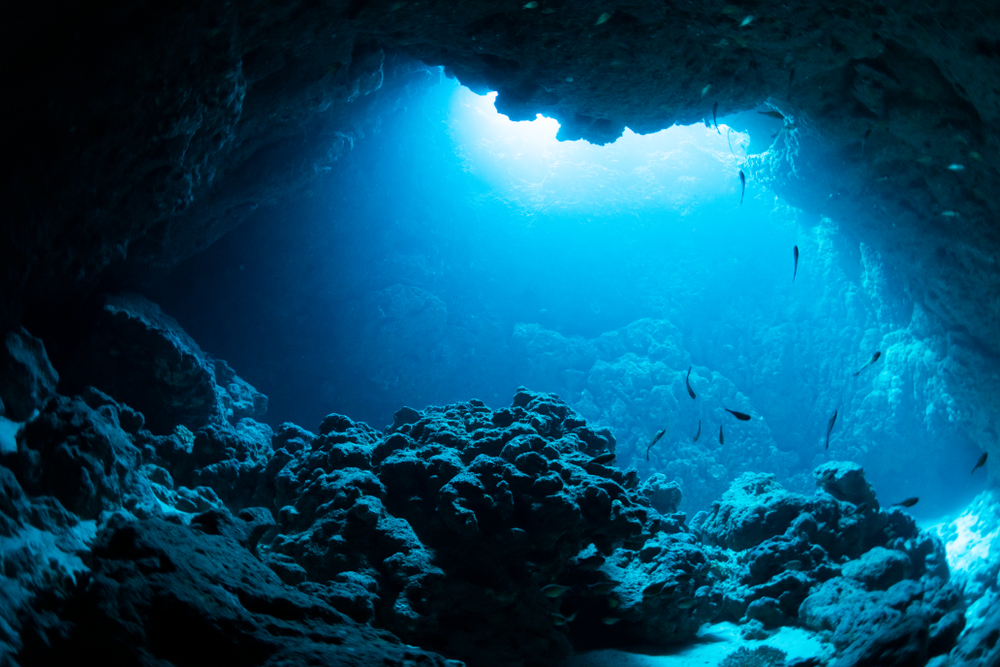
Gulper eels are fascinating creatures, with their massive mouths and expandable stomachs that allow them to consume prey much larger than themselves. Often found in deep Atlantic Ocean waters, their most distinctive feature is their disproportionately large mouth, which accounts for a significant portion of their body length. This unique adaptation is essential for survival in an environment where food is scarce, enabling them to take advantage of any food source they encounter.
The gulper eel’s slender, elongated body and whip-like tail only add to its eerie allure. It can emit light from the tip of its tail, which it uses to attract prey in the dark ocean abyss. Despite its unusual form, the gulper eel is a testament to the creative ways life has evolved to survive in extreme conditions. Its existence highlights the endless variety of life forms that inhabit our planet’s most remote and mysterious places.
9. Leafy Seadragon

The leafy seadragon is a mesmerizing example of nature’s ingenuity, with its ornate appendages resembling floating seaweed. Found primarily in the waters off southern and western Australia, this creature is a master of disguise, blending seamlessly with its surroundings. Its delicate appearance belies a resilient nature, as it navigates the challenges of ocean life with grace. The leafy seadragon is a slow swimmer, relying on its camouflage to avoid predators rather than speed.
Beyond its captivating looks, the leafy seadragon is an important part of the marine ecosystem, contributing to biodiversity and environmental balance. They feed on small crustaceans and plankton, playing a vital role in the food web. Despite their beauty, leafy seadragons face threats from habitat loss and environmental changes. Conservation efforts are crucial to ensure that these enchanting creatures continue to thrive in their natural habitats.
10. Barreleye Fish
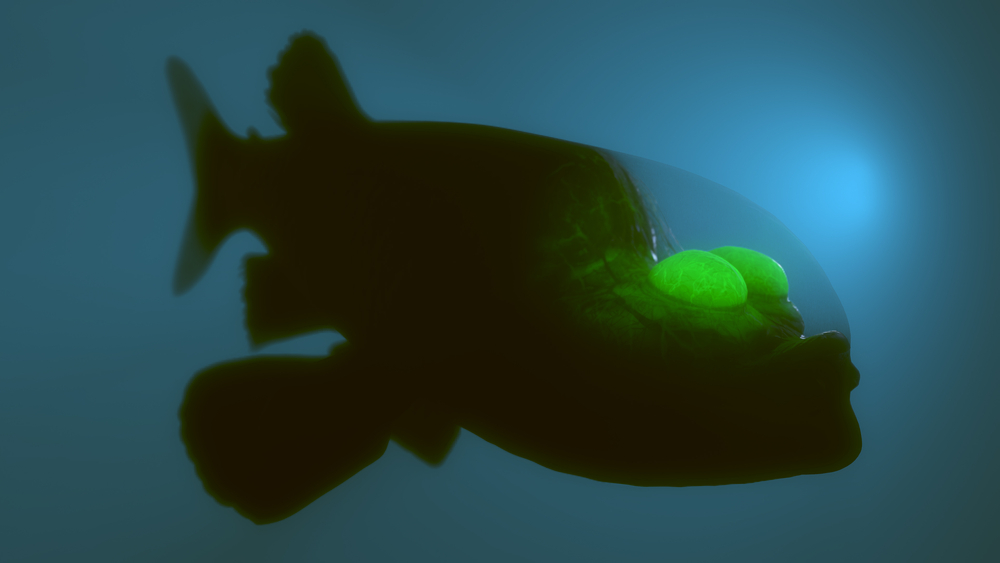
The barreleye fish is a deep-sea marvel known for its transparent head and tubular eyes, which can rotate to gaze upward. This adaptation is vital for spotting the silhouettes of prey against the faint light filtering down from above. Found in the Pacific Ocean, barreleye fish inhabit depths of up to 2,600 feet, where they hunt small fish and plankton. Their transparent heads are filled with fluid, allowing their eyes to move in a protective shield.
The barreleye fish’s uncanny appearance has intrigued marine biologists and ocean enthusiasts alike. Its evolutionary adaptations are prime examples of how life in the deep ocean has evolved in extraordinary ways. By allowing its eyes to see through its transparent head, the barreleye can navigate and hunt efficiently in its dark environment. This remarkable creature exemplifies the mysterious and often bizarre innovations that life on Earth can produce.
11. Stonefish
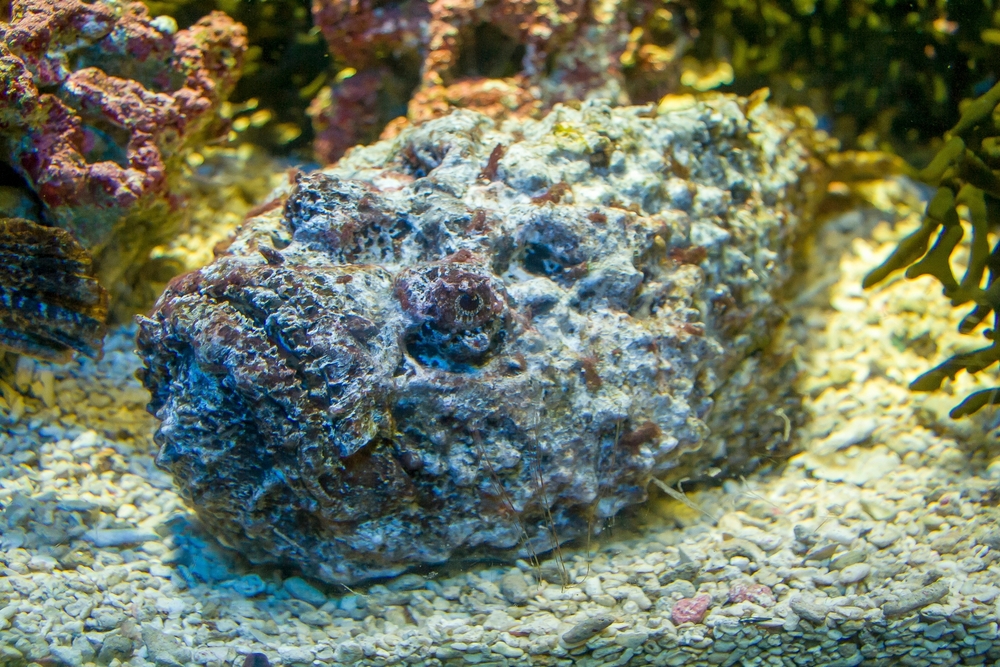
Stonefish are notorious for their venomous spines and uncanny ability to mimic a rock or piece of coral. Found in the shallow waters of the Indo-Pacific region, they are masters of disguise, blending perfectly with the ocean floor to ambush prey. Their venom is potent enough to cause severe pain, paralysis, or even death in humans, highlighting the dangers that lurk beneath the sea’s serene surface. Despite their deadly reputation, stonefish play a crucial role in controlling the population of smaller fish and maintaining ecological balance.
The stonefish’s ability to remain undetected is both its strength and weakness, as it relies on surprise to capture its prey. Their diet consists mainly of small fish and crustaceans, which they consume using a rapid, vacuum-like action. While their venomous nature makes them a fearsome presence, stonefish are integral to the health and stability of coral reef ecosystems. Their presence serves as a reminder of the delicate interplay between beauty and danger in the marine world.
12. Bigfin Squid
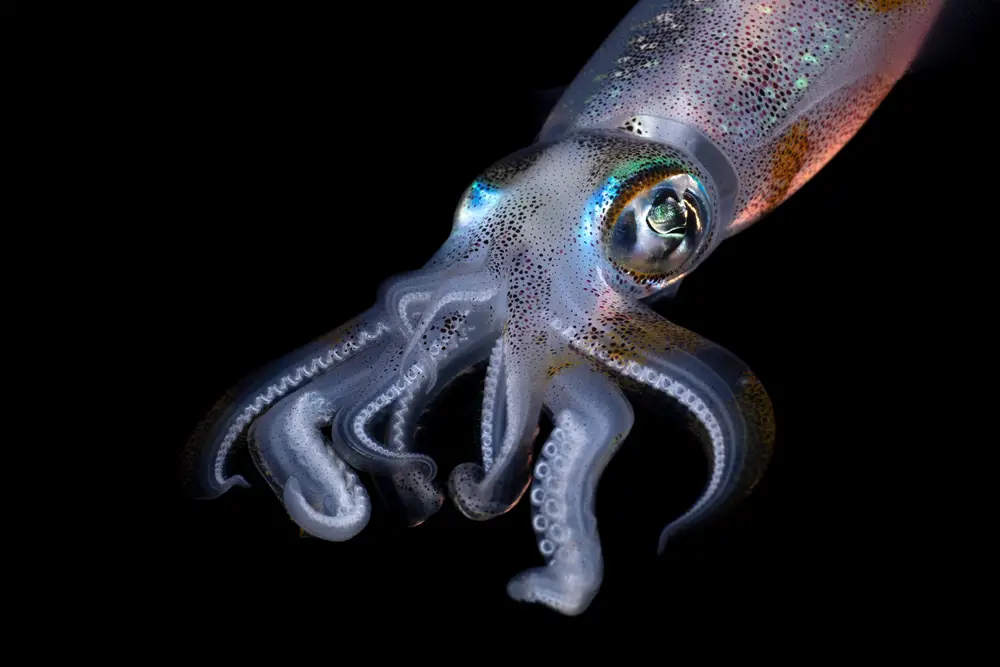
The elusive bigfin squid is a deep-sea enigma, rarely seen and even more rarely captured on film. Its long, trailing tentacles and ghostly appearance give it an ethereal quality that simultaneously captivates and unsettles. Found at depths of over 15,000 feet, these squids are a testament to the mysteries that still abound in our oceans. The bigfin squid’s appendages can stretch up to 20 times the length of its body, an adaptation that aids in capturing prey from a distance.
Despite being observed only a handful of times, the bigfin squid has sparked significant intrigue within the scientific community. Their enigmatic behavior and infrequent sightings make them a subject of ongoing research and fascination. These squids embody the vast, unknown possibilities that lie beneath the ocean’s surface, challenging our understanding of marine life. The bigfin squid is a poignant reminder of how much there is yet to discover in the world’s oceans.
